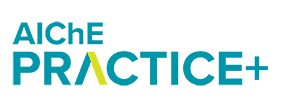
LIMITED TIME OFFER: Use promo code SUMMERSALE20 to take 20% off on eLearning courses. Some restrictions apply.
The topic of Damage Mechanisms-Asset Integrity and Reliability is a specialized topic in the broader field of Risk Based Process Safety. It is multi-disciplinary by nature requiring knowledge of:
- Corrosion Theory – Ways in which Process Equipment Degrades in Operation
- Unit Mechanical/Chemical Processes - How the Equipment is Designed and Operated in the Process
- Test and Inspection - How to Detect and Evaluate the Equipment during Operation
- Restorative Actions - How to Return the Equipment to Operational Status
Damage Mechanisms: Asset Integrity and Reliability, is a key element of OSHA 1910.119 subpart j- Mechanical Integrity. National Emphasis Program audits have consistently cited deficiencies in this key PSM element as one of the larger risks for the safe operation of facilities. Recently, companies and organizations such as CCPS have focused efforts specifically on increasing the understanding and implementation of Asset Integrity and Reliability as it relates to process safety.
Unit 1
- Explain what damage mechanisms are and give some examples;
- Using corrosion theory, describe the way in which process equipment can degrade in operation;
- Look for and detect corrosion mechanisms; and
- Explain how corrosion mechanisms contribute to risk in an operating facility.
Unit 2
- Explain the importance of understanding the Operating Context of the equipment;
- Describe how the material of construction is selected for process equipment;
- Explain how Corrosion Control Documents can be used as a tool for process design; and
- Explain what can happen when the equipment is operated outside of its design basis.
Unit 3
- Explain why equipment inspection is important from a safety, up-time, and jurisdictional perspective;
- List some jurisdictional regulations for mechanical integrity requirements;
- Describe some basic inspection methods, including visual, ultrasonic thickness, eddy current, and radiographic weld inspection;
- Describe the requirements for equipment inspection and how they’re implemented; and
- Explain how risk concepts are integrated into an inspection program.
Unit 4
- Explain what a P-F Failure Curve is and how it can be used to better understand inspection, corrective action, and ultimate failure;
- Explain what an Equipment Life Cycle Curve is and why it’s important;
- Explain how inspection data can be used to determine equipment remaining life;
- List the options available to correct equipment deficiencies; and
- Explain what an Asset Effectiveness Plan is and how it can be used as a maintenance management tool.
This course is designed to be of interest to those students (undergraduate and graduate) as well as new professionals, who have had previous exposure to process safety fundamentals and some familiarity with basic process equipment design.
This course builds on other related SAChE courses, primarily those dealing with Manage Risk- Asset Management (ELA998) and Hazards and Risks: Safeguards other than Relief Systems (ELA973). This course provides a baseline understanding for those students who wish to pursue more extensive and detailed study of the how equipment is designed and inspected to minimize risk over the life cycle of the equipment.
- Unit 1: Corrosion Theory
- Unit 2: Mechanical and Chemical Unit Processes
- Unit 3: Test and Inspection
- Unit 4: Inspection Evaluation and Restorative Actions
Find answers to questions about registration and refunds, tuition and fees, travel and lodging (for location-based courses), how eLearning courses work, how credits work, and more.


